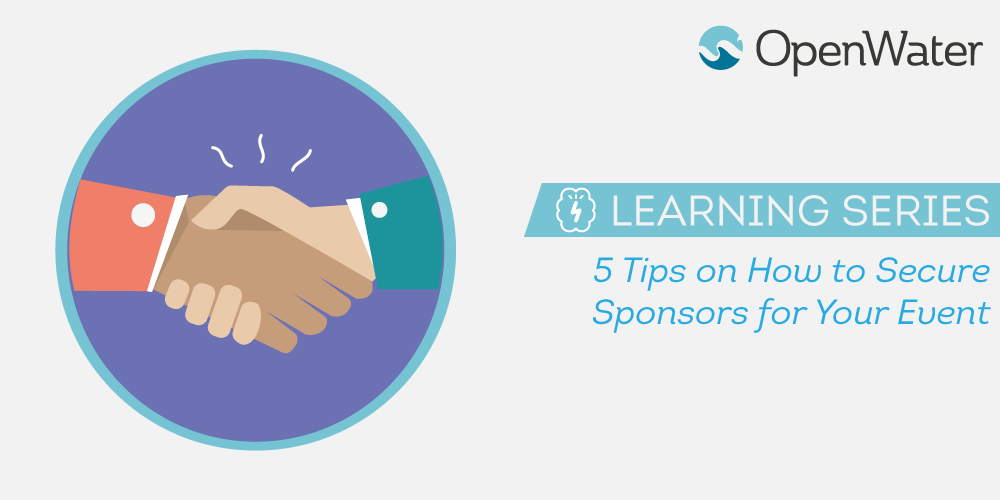
5 Tips on How to Secure Sponsors for Your Event
Your abstracts conference is expensive when you consider the venue, food, and countless other costs that add up quickly. And, while most organizations view this as a drawback to hosting an event, you should view it differently; you should view it as an opportunity to attract and build relationships with sponsors.
Of course, building a repertoire with sponsors is something that takes time and energy. However, doing so can significantly offset, if not eliminate, the cost of your conference.
That being said, how are you supposed to attract high quality sponsors for your event both now and in the future? We’ve got 5 tips that will help you do just that.
1. Pull From Companies that Fall Within Your Demographic
You can eliminate a lot of “no’s” by turning to sponsors who share the same target demographic as you! After all, sponsors want to be represented at events for audiences comprised of the proper income level, geographic location, buying patterns, and other qualities the sponsor also seeks in their customers.
Remember, sponsors expect you to market their brand in exchange for their fiscal support. As such, it’s important that you choose sponsors with readily marketable brands so your audience knows you understand both them and their needs.
2. Take Time to Understand Sponsorship Guidelines
Once you’ve narrowed potential sponsors to a pool that reflects your demographic, you should take time to better understand sponsorship guidelines. More importantly, you should pay attention to details like:
- Maximum funding allowances;
- When certain sponsors are accepting applicants (because not all are open to sponsoring new events year-round); and
- Proposal instructions (i.e. requirements, etc.)
Sponsors put these guidelines in place to eliminate organizations that don’t take the time to learn about the requirements. More importantly, sponsors want to support organizations that are thorough and attentive because the sponsor is going to be associated with the organization. As such, you need to do your homework.
3. Put Forth Your Best Proposals
If you narrow your efforts down to a few select sponsors, you’ll have a much better chance of winning the proposals you actually want rather than winning more proposals that may not be as beneficial for your organization. However, this means you must put in the time to craft proposals that speak to each organization on an individual level.
Each proposal should include:
- A brief introduction;
- A description of your event and why you’re requesting a sponsorship;
- A brief plan of how you plan to market the sponsor or otherwise incorporate the sponsor in your event;
- A breakdown of the money you’re requesting in contrast to the cost of your event; and
- A closing summary
Most importantly, you should include details in the proposal that demonstrate you’ve followed the sponsor beyond just requesting its monetary support. Doing so is a simple way to distinguish your application from the rest.
4. Follow Up on All Your Proposals
You should never put proposals out there if you aren’t going to follow up with a phone call or email. After all, if you took the time to put together a proposal, it’s in your best interest to encourage a response – whatever that response may be.
If you don’t hear from the sponsor after reaching out again, it’s best to move on to other options. However, most sponsors will give you a chance if you follow up and may even review your proposal if they otherwise had passed you up.
Note that you should follow up even if you’re granted the sponsorship. Following up will keep the sponsor informed as to what you’re planning to do with their marketing at the event or what you have coming up as your event progresses.
5. Build a Long-Term Relationship
It’s in your best interest to build a long-term relationship with all your sponsors. Doing so will often mean you’ll retain repeat current sponsors in subsequent years.
Building a relationship requires you to stay in contact with a sponsor for more time than the event itself or exchanging a few emails after the event. Instead, you should stay in touch by:
- Extending promotions to your sponsor’s followers;
- Linking to the sponsor in blog posts, emails, or other communications;
- Releasing promotional videos that make mention of the sponsor where appropriate
The idea here is to mingle your two brands where appropriate. You should mention the sponsor where you have a meaningful place to do so and should promote their products or services when you believe doing so is appropriate for your audience.
Getting Your Event Sponsored Shouldn’t be Difficult…
…and with these tips, it doesn’t have to be. Each of the tips above is constructive when you need to either build sponsorships from scratch or build upon working relationships with sponsors who you have worked with in the past.
Your event should be simple. Finding sponsors should be simple. With the tips above, you can accomplish both.
